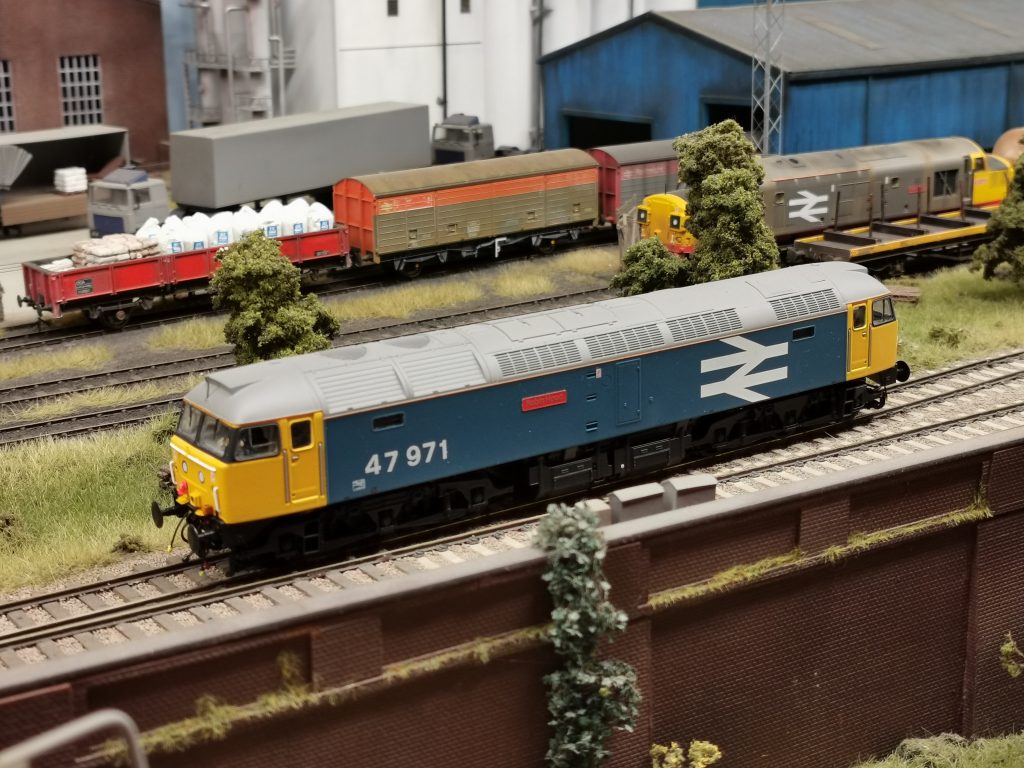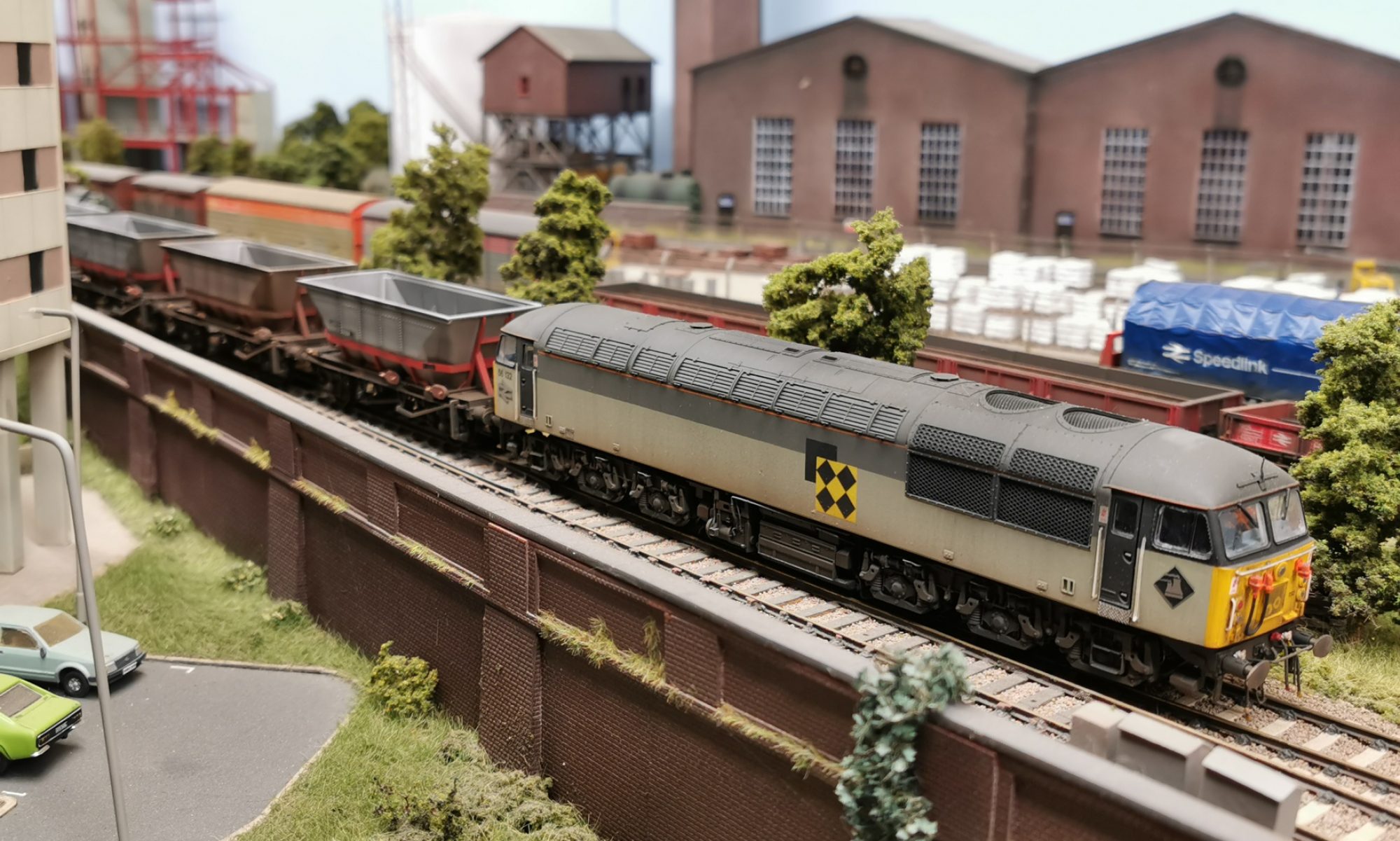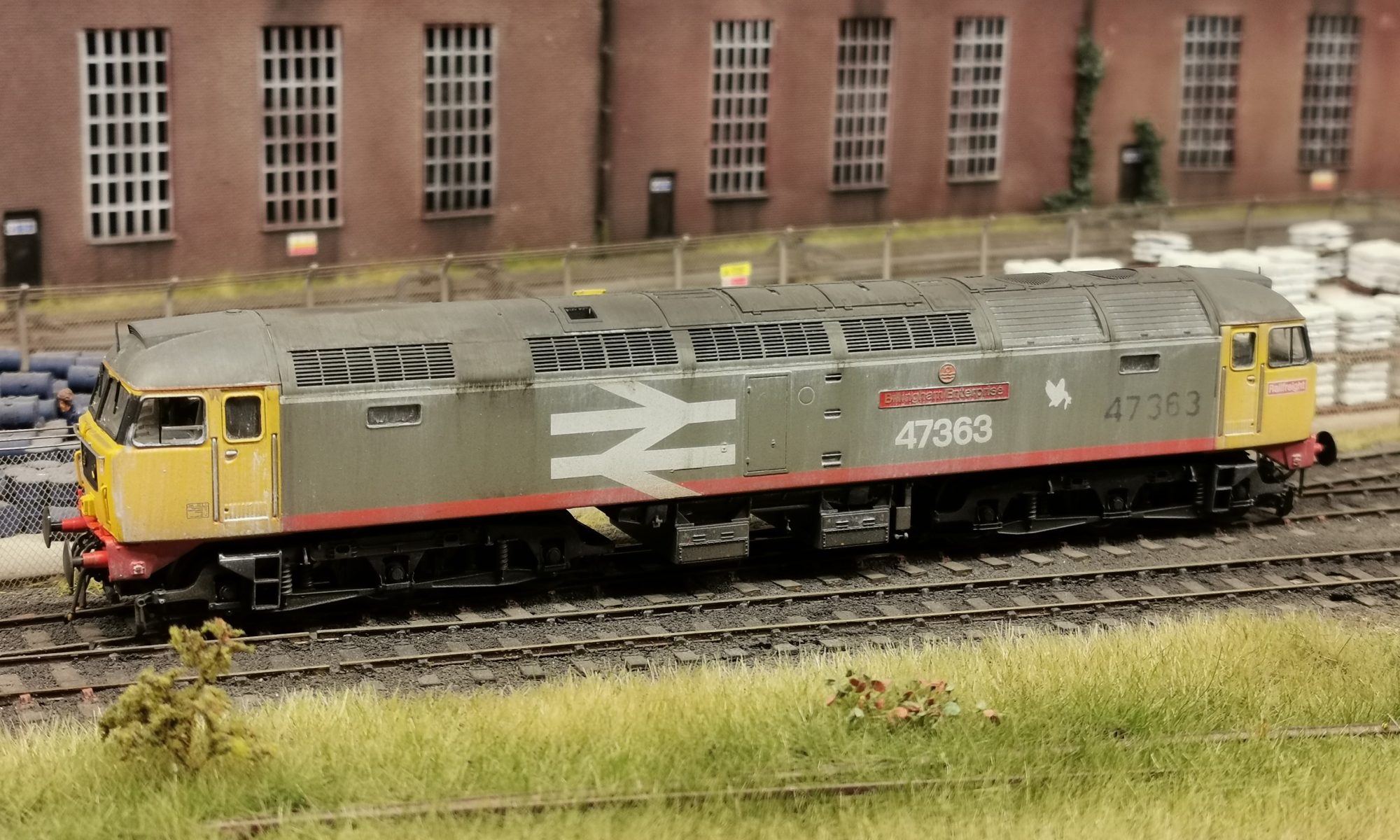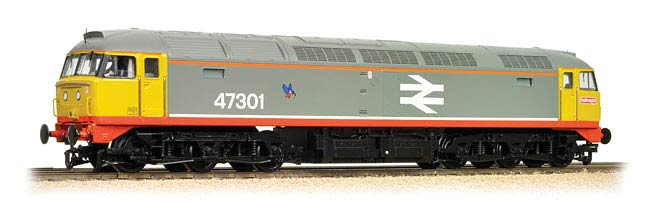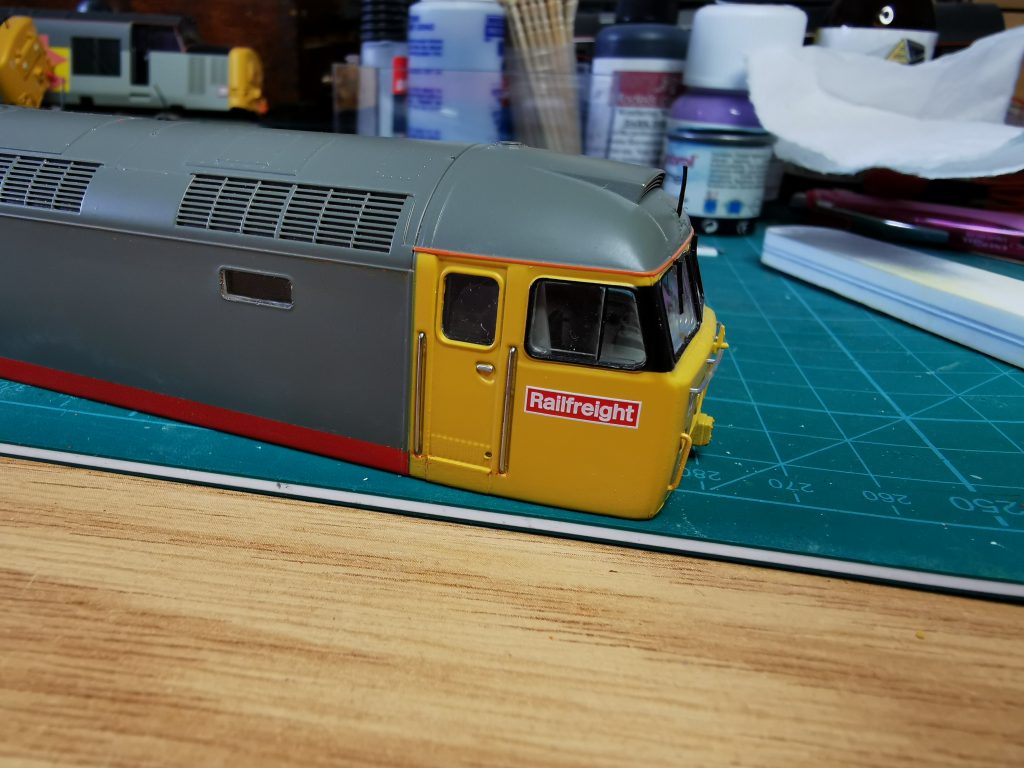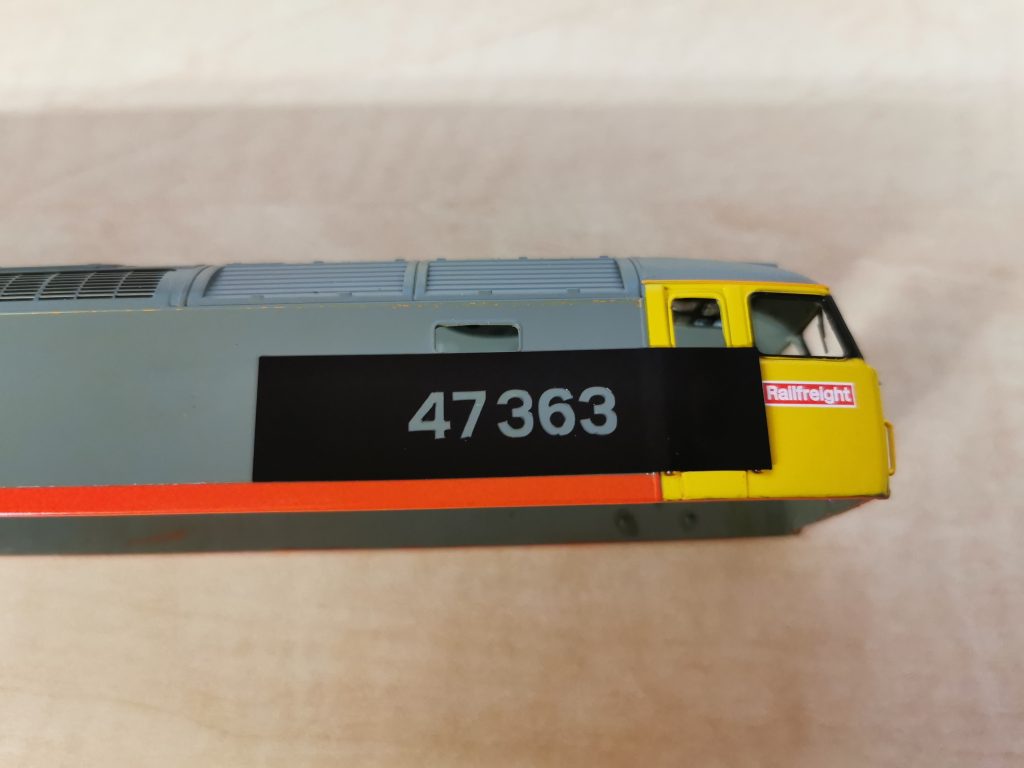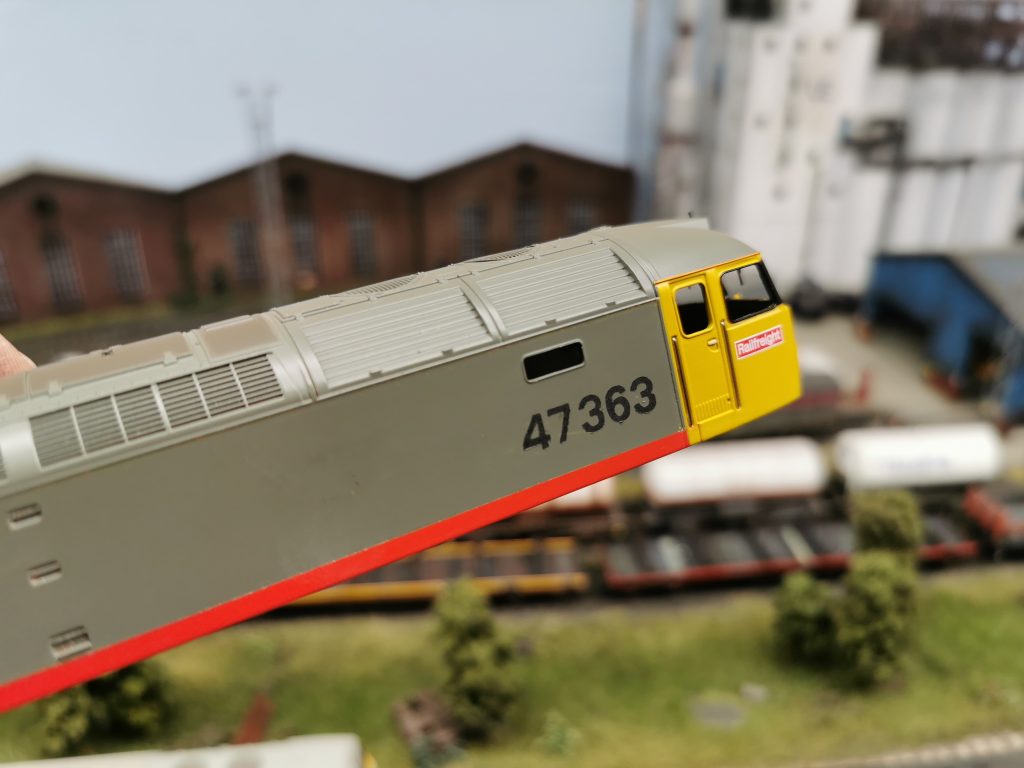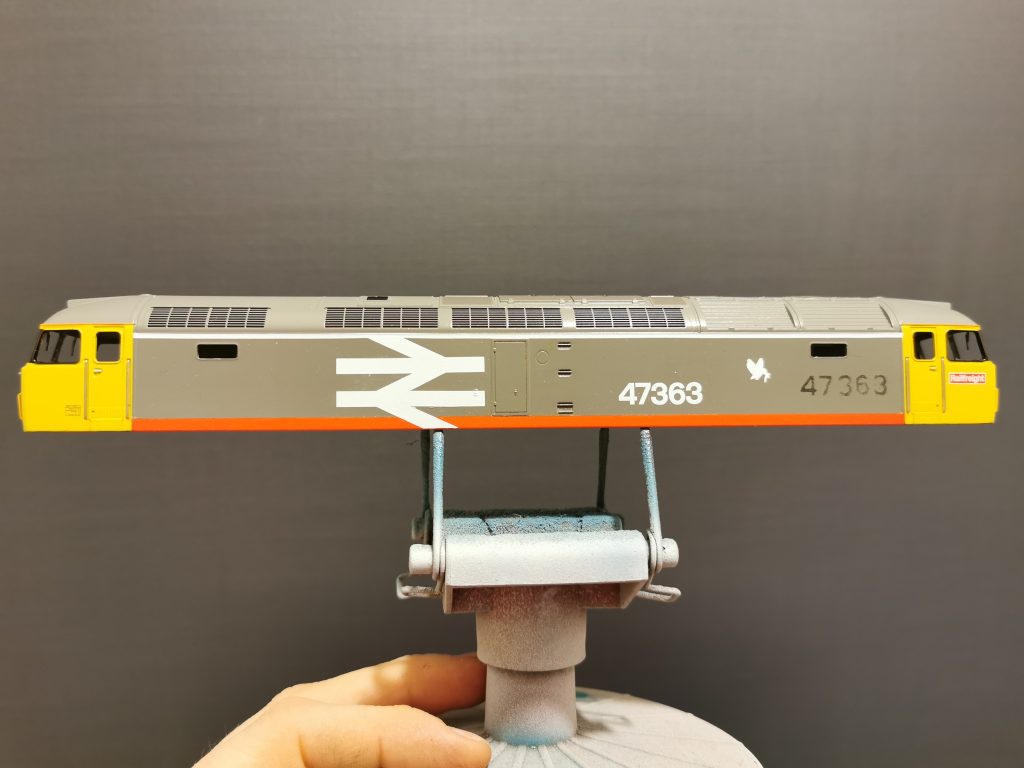I recently purchased a model of MENTOR from a friend and realised I didn’t have any suitable traction for it. With a quick look through my collection of Bachmann Class 47’s, and some research time spent on class47.co.uk, a suitable doner loco was found.
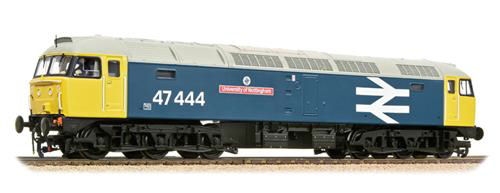
The base model for this project was Bachmann 31-660A 47 444 ‘University of Nottingham’, and once the body was seperated from the chassis, work began on removing the numbers.
This model has a round boiler plate cover, so that was shaved off using a sharp scalpel, and a replacement square etched brass boiler plate was fitted. This was supplied by Shawplan, part number EEDP47-15.

47 971 has a non standard darker colour grey roof, so the next job was to mask up and respray it. I sprayed the etched roof details with white Etch Primer first, and after studying further photos of the prototype, I decided to paint the roof with Games Workshop Dawnstone Grey.
I then turned my attention to the cab fronts. While sorting through the spares box, I found a pack of Shawplan white metal MU fittings. I don’t think they are available anymore, and I think I bought them of Graham Shaw many years ago at Wolverhampton Model Railway Club’s exhibition. Anyway, a pilot hole was drilled and the MU fitting was painted before fitting using Games Workshop Jokaero Orange. The bufferbeam details were then added, with Romford screw link couplings and the fuel tank was swapped for the correct one for this loco.
The loco now received an acrylic gloss varnish, ready for Railtec Transfers. I used left over parts from other transfer sheets, but Railtec do a complete sheet for this loco. Note the numbers on the prototype are wonky and spaced further apart than normal! Once left to dry over night, a coat of acrylic matt varnish was applied. The loco just requires weathering to finish, but I’ll leave that for another day.
